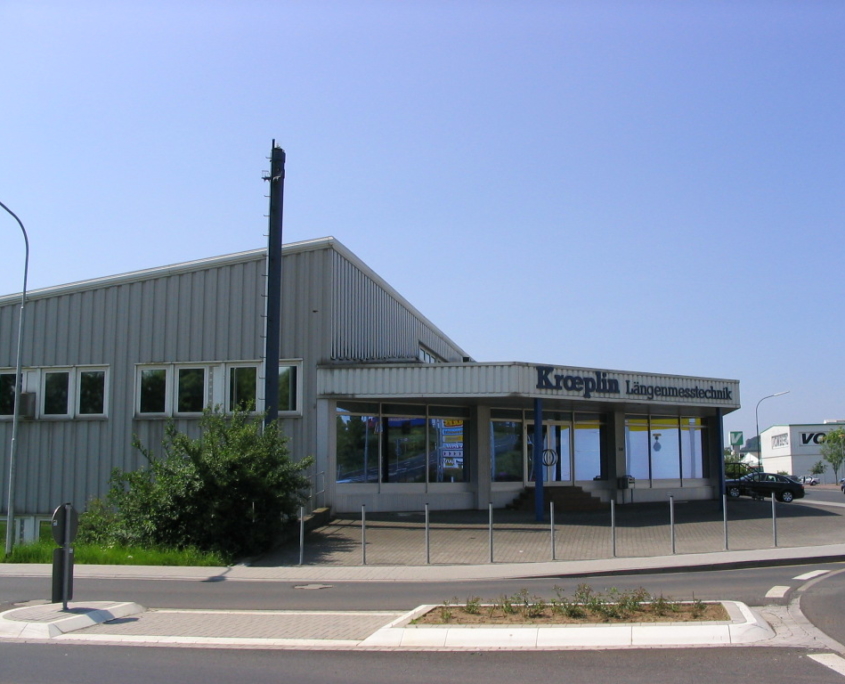Kroeplin – a company with a grand history
When Heinrich Carl Kröplin set himself up as an independent master watchmaker in his home town of Bützow (previously part of the Grand Duchy of Mecklenburg-Schwerin) in 1883, nobody could have known he was laying down the foundation stones for a highly specialised company of global relevance. And yet the company actually had an international focus in its earliest days, as prior to starting his business, H.C. Kröplin had not only completed training and worked in a variety of towns and cities in Germany, he also attended the technical university in Switzerland and worked in companies on Lake Geneva and in the south of France.
In his workshop, he quickly realised his own developments in the area of measuring instruments. He gained knowledge about potential users and the latest methods at the world exhibition in Paris. His initial successes included spherometers and lensometers for the optical industry, as well as barometers. His watch-making workshop quickly grew into a manufacturing business which kept pace with industrial developments, concluded contracts with importers in many countries in Europe and in the USA, and whose products attracted great interest at the Leipzig Trade Fair. When the son-in-law of H.C. Kröplin, Gustav Adolf Stier, joined the company in 1909, a second company opened in the university city of Rostock which focused on developing devices for use in the teaching of the natural sciences.
The challenges we will face in the future will be based upon the need to decisively respond to changes in the markets, to global change and to ever shorter development times, and to harness these challenges to ensure a successful future for our company.
The First World War saw the production programme temporarily focusing on barometric altimeters for aircraft. As the year changed from 1918 to 1919, H. C. Kröplin retired, handing over the company to his son-in-law and his son Heinrich in equal shares. The product development remained aligned with the current requirements of the market and continuously made use of new technologies. The production systems were extended several times over, the number of qualified staff continued to grow and by 1929 the foreign business had grown to account for 70 percent of the company’s work. The company did not go unaffected by the global economic crisis that followed the Wall Street Crash, but its adaptability enabled it to overcome the changed situation in the market. During this difficult period, Karl Heinrich Stier became co-owner, and focused to a particular extent on hygrometry, creating the conditions for a new clientele in the areas of mechanical engineering, the engine, car and aircraft industries. The continuous further development of the first fine measurement instruments resulted in the ‘Kröplin Quick Test System’ which is the basis of all further innovations through to the electronic measuring gauges.
The Soviet occupation following the end of the 2nd world war and the post war upheavals meant that the company’s expansion was interrupted. The following years witnessed expropriation, flight to the west, the salvaging of important components, construction drawings and customer and supplier directories in cloak and dagger operations. At the start of 1948, K. H. Stier forged a business relationship with Professor K. Lehmann in Essen and his son-in-law, Ullrich Werckmeister in Schlüchtern, who then became his partners in the reconstruction of the Quick-Test manufacturing. In the very same year, the firm Ruhrfeinmechanik GmbH was established in Essen along with a subsidiary in Schlüchtern which was managed by Ullrich Werckmeister and Adolf Stier, and from which Kröplin GmbH emerged in July 1950 with its two managing partners, 8 employees and starting capital of DM 20,000.
In Essen the use of the meridian guide, a gyro-compass for underground orientation in mining was refined, the further development of which Dr. Ing. K. H. Stier dedicated himself to. The company was soon attending its first post-war trade fair – in Hannover in 1952. The traditional strategy of product innovation whilst looking ahead to the development of the technological requirements of markets both at home and abroad proved successful yet again.
The growth of the new firm out of little more than nothing was characterised by a wide range of new precision instruments that were refined in terms of their measuring accuracy, as well as a clientele with a global reach, production works extended many times over, and an internal company organisation that was configured and managed according to the latest principles.
After the deaths of A. Stier in 1973, and U. Werckmeister in 1980, Werckmeister’s son, Dipl. Wirtsch. Ing. Claus Werckmeister, assumed sole management of Kroeplin GmbH. This time was also dominated by the development of the third generation of measuring devices, the “electronic testing arm-measuring gauges.” Microelectronics in quick testers turned out to be an innovative step which ushered in the biggest single expansion in the company’s one hundred year story. The new management and production buildings which were occupied in the summer of 1983 created the conditions for being able to respond to the requirements that our customers all over the world face with the technologies of the future in a flexible and efficient way.
In 2011, Dipl. Ing. Markus Deberle joined the executive team. This step ensured both the continuation of the company and the consistent realisation of responsibility towards our employees as well as our customers.


